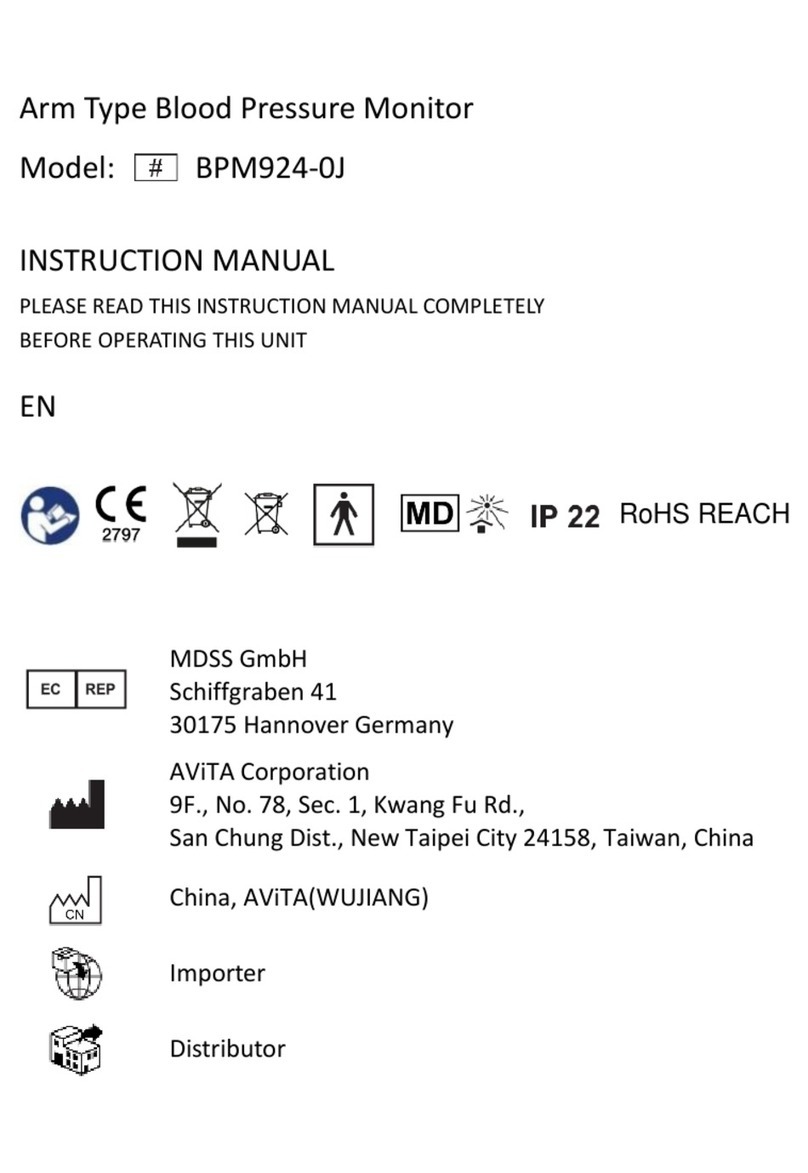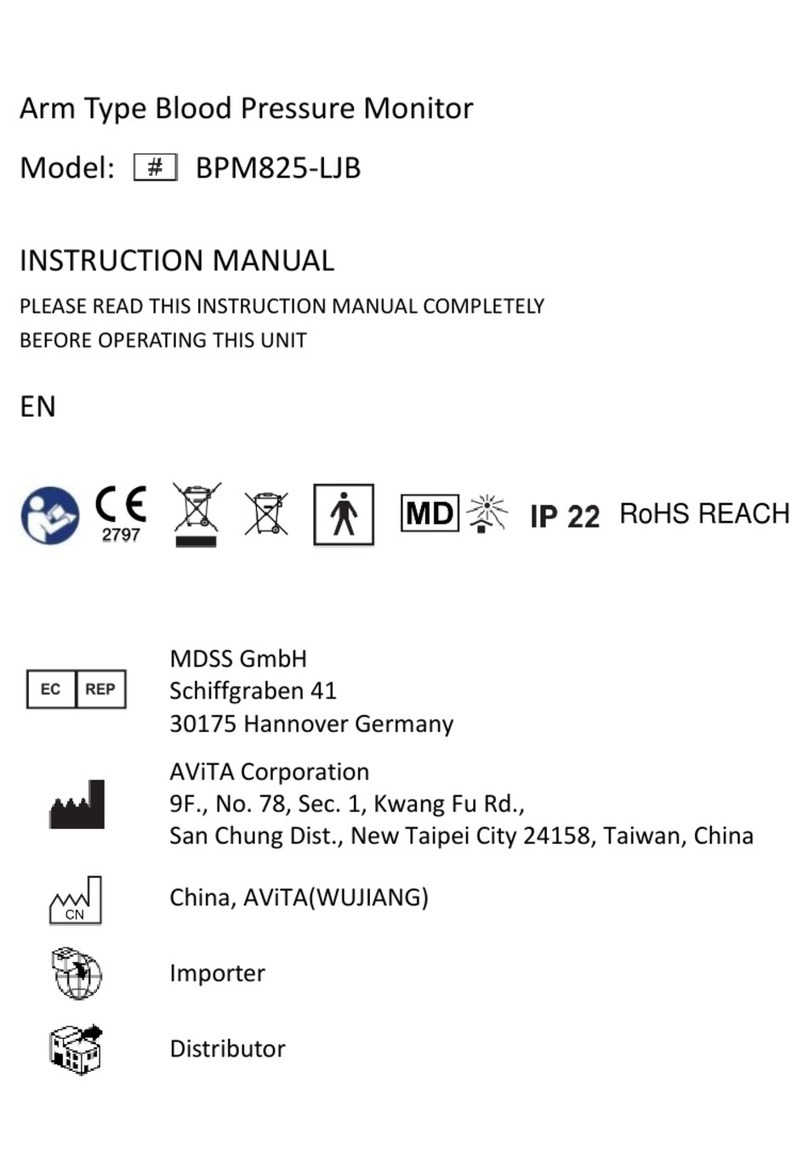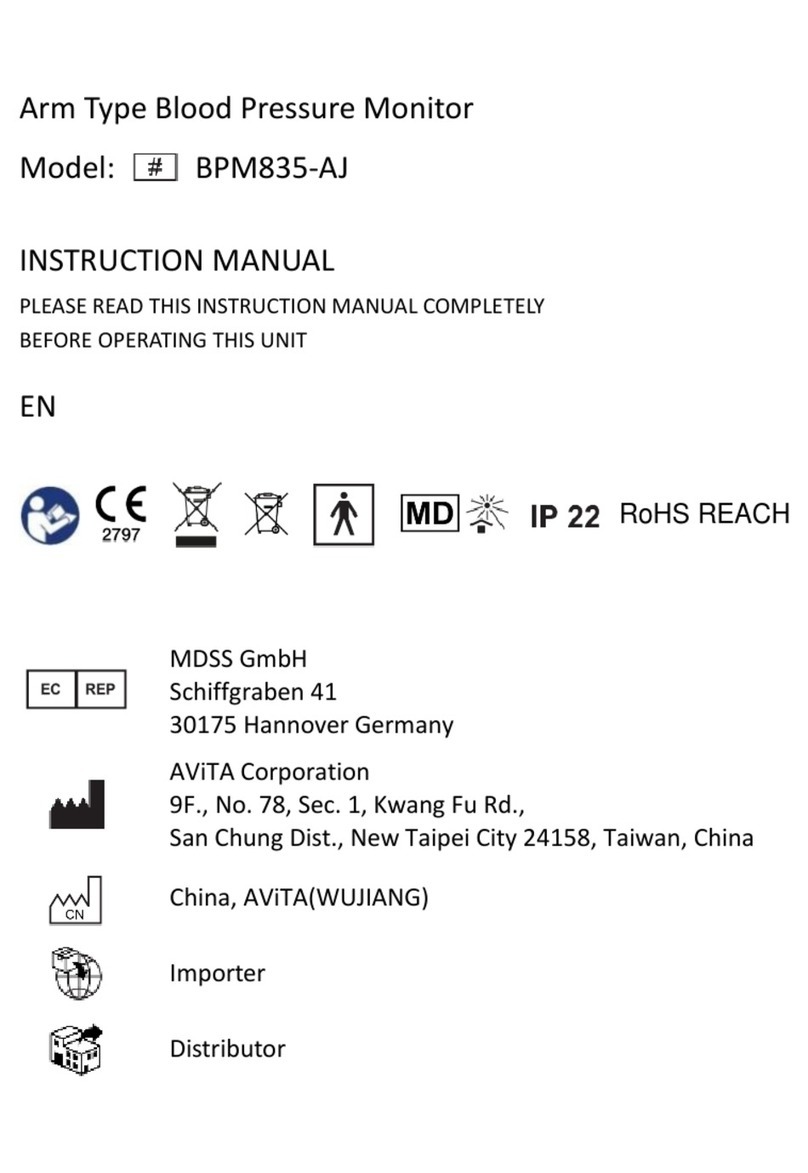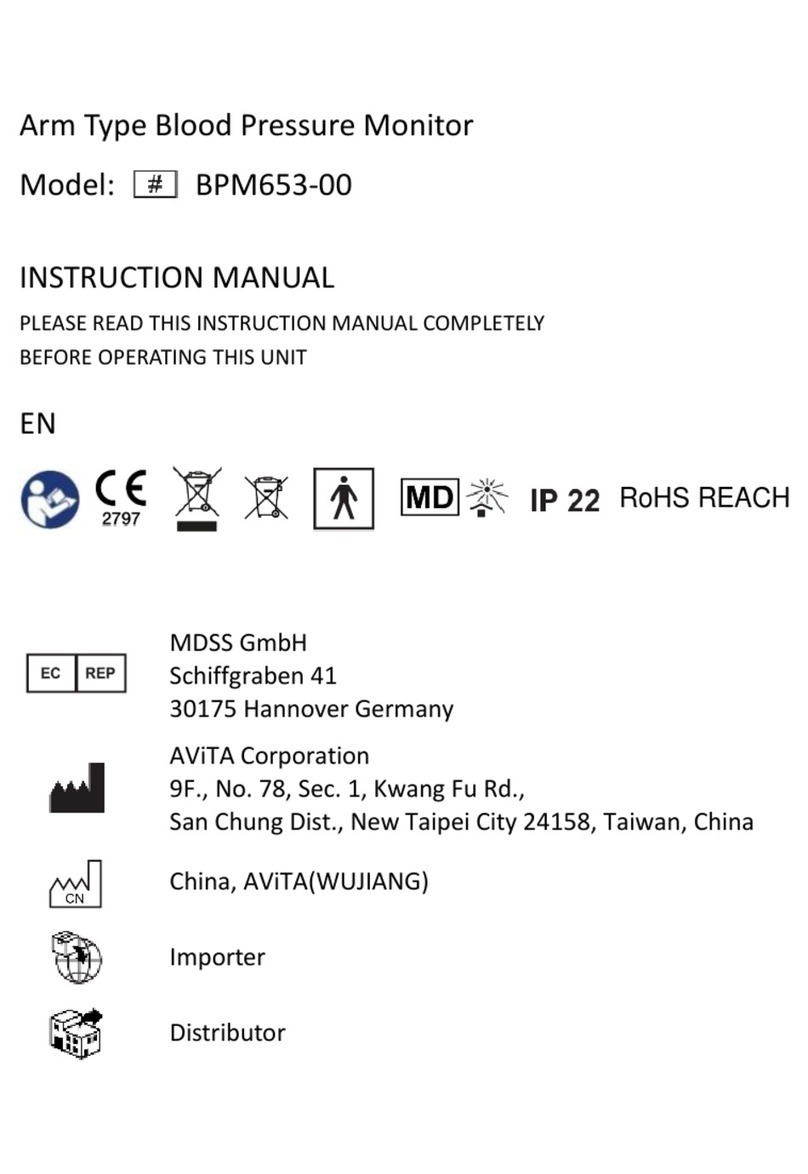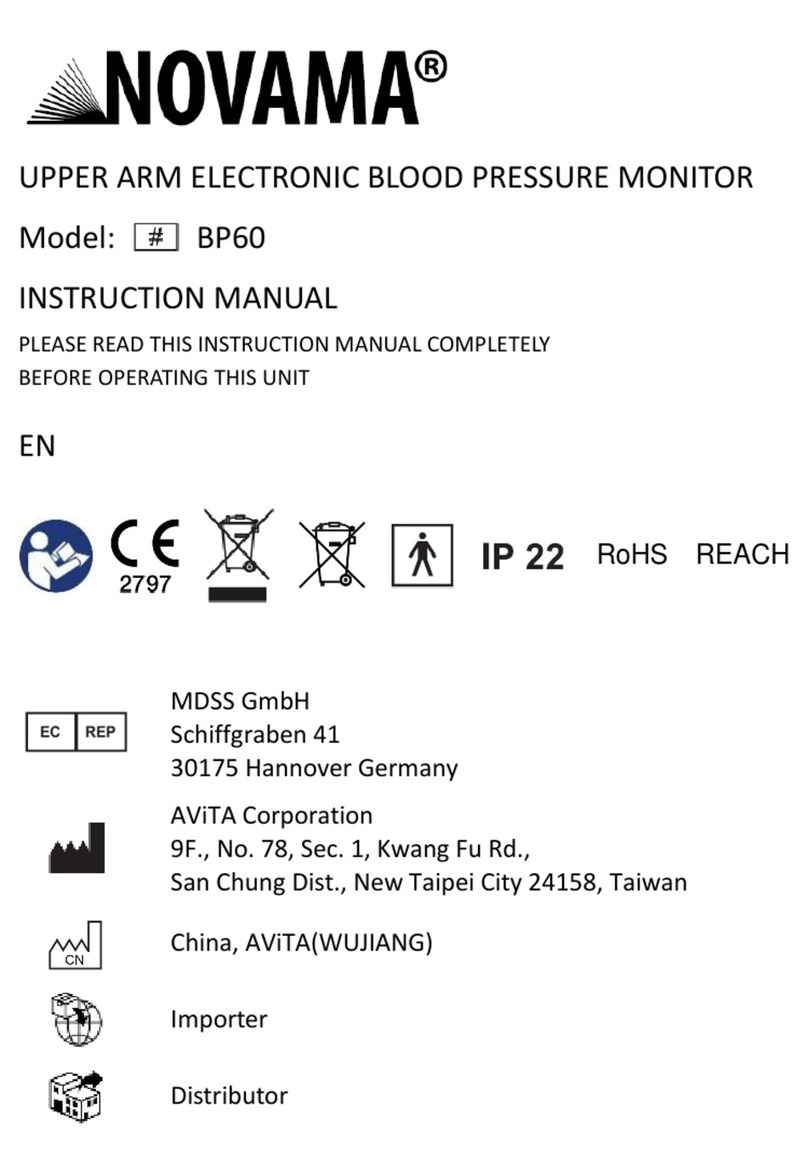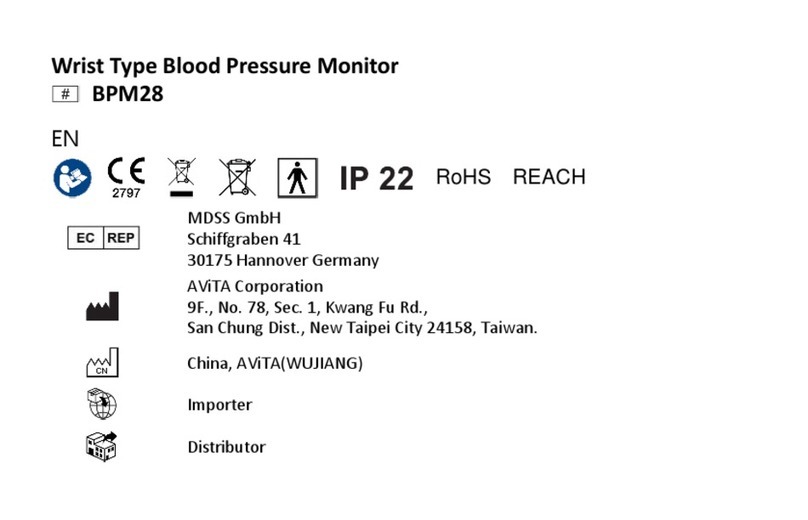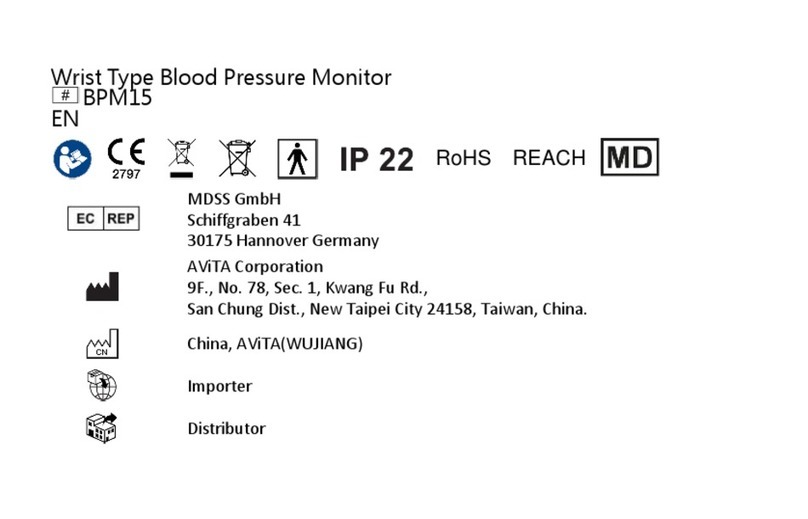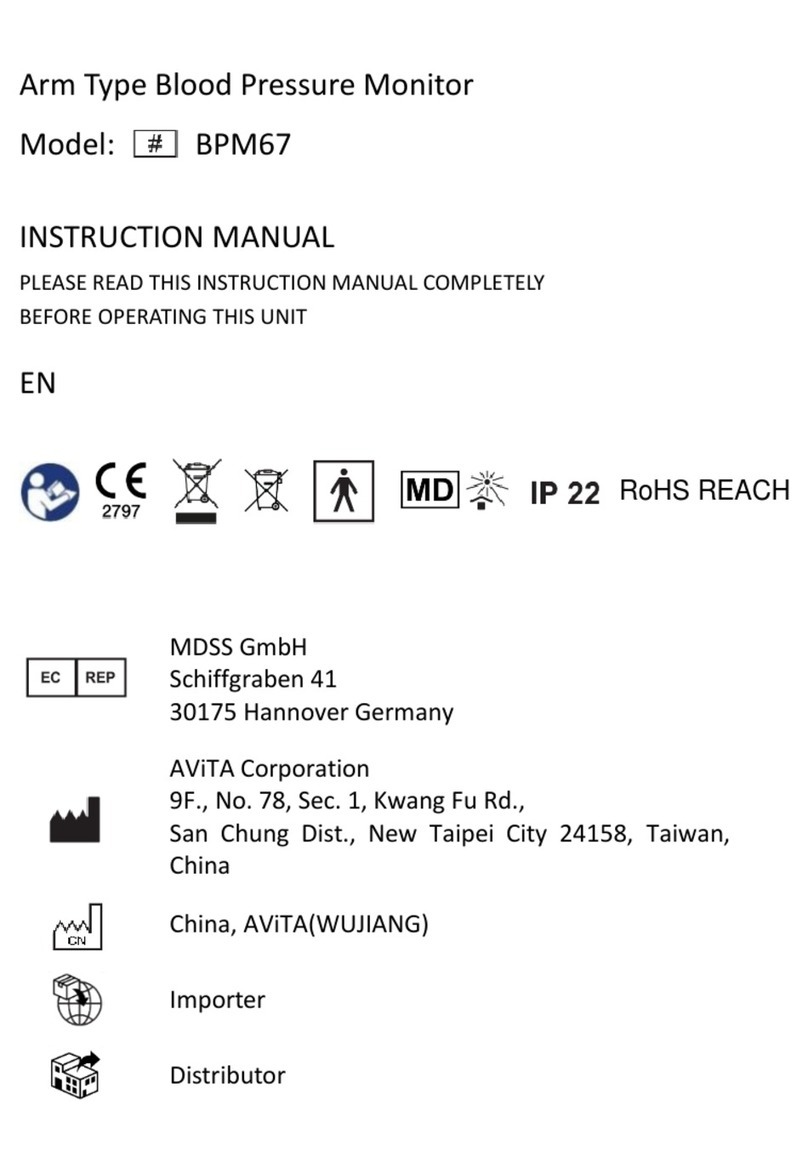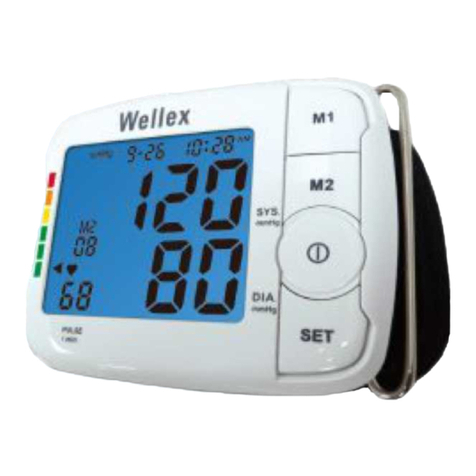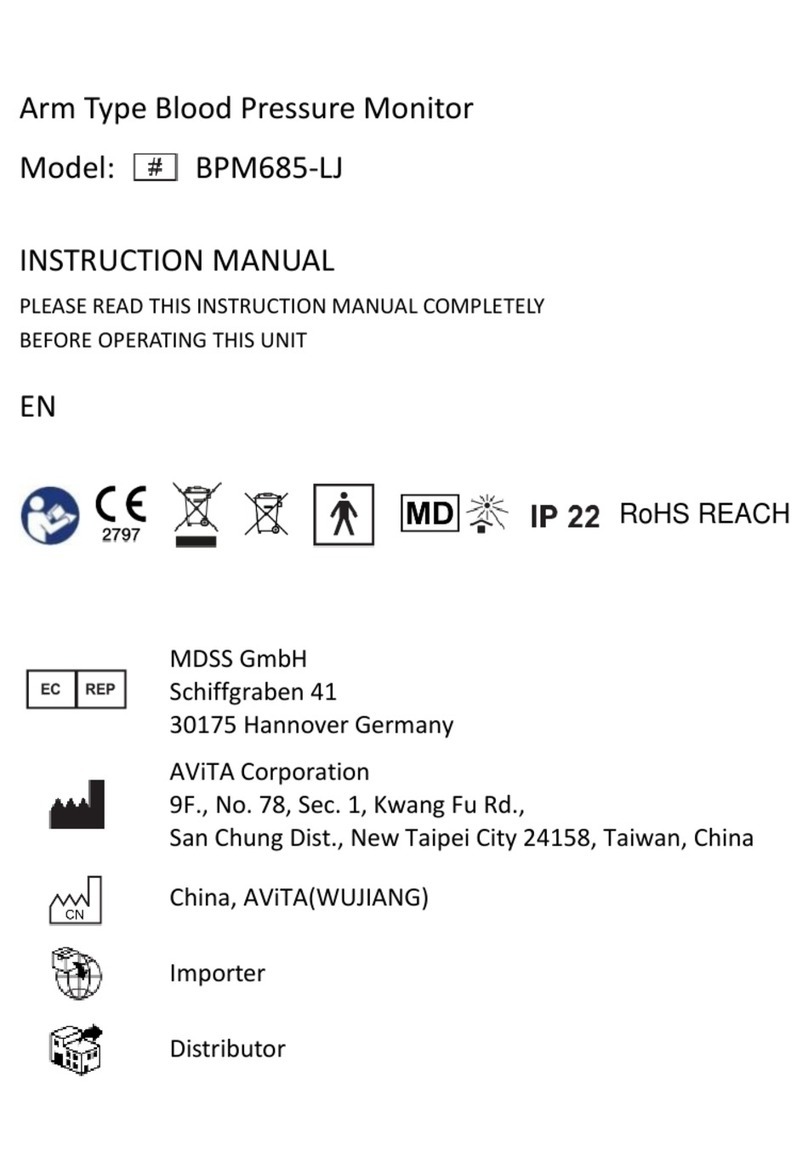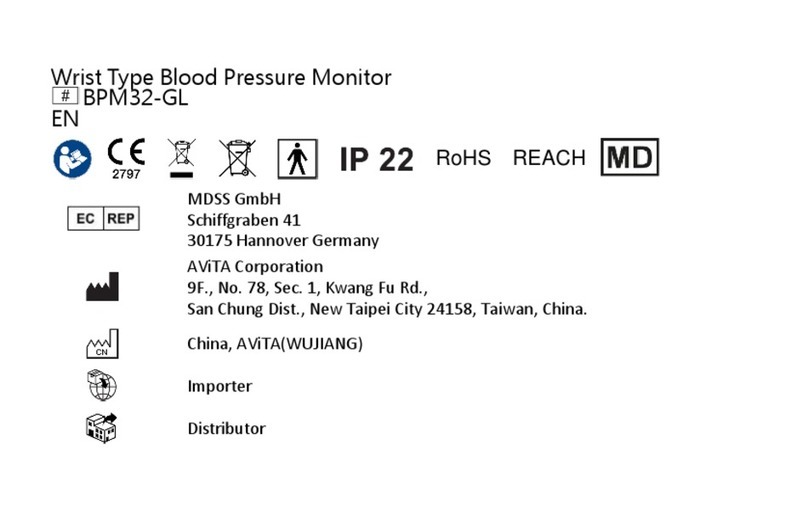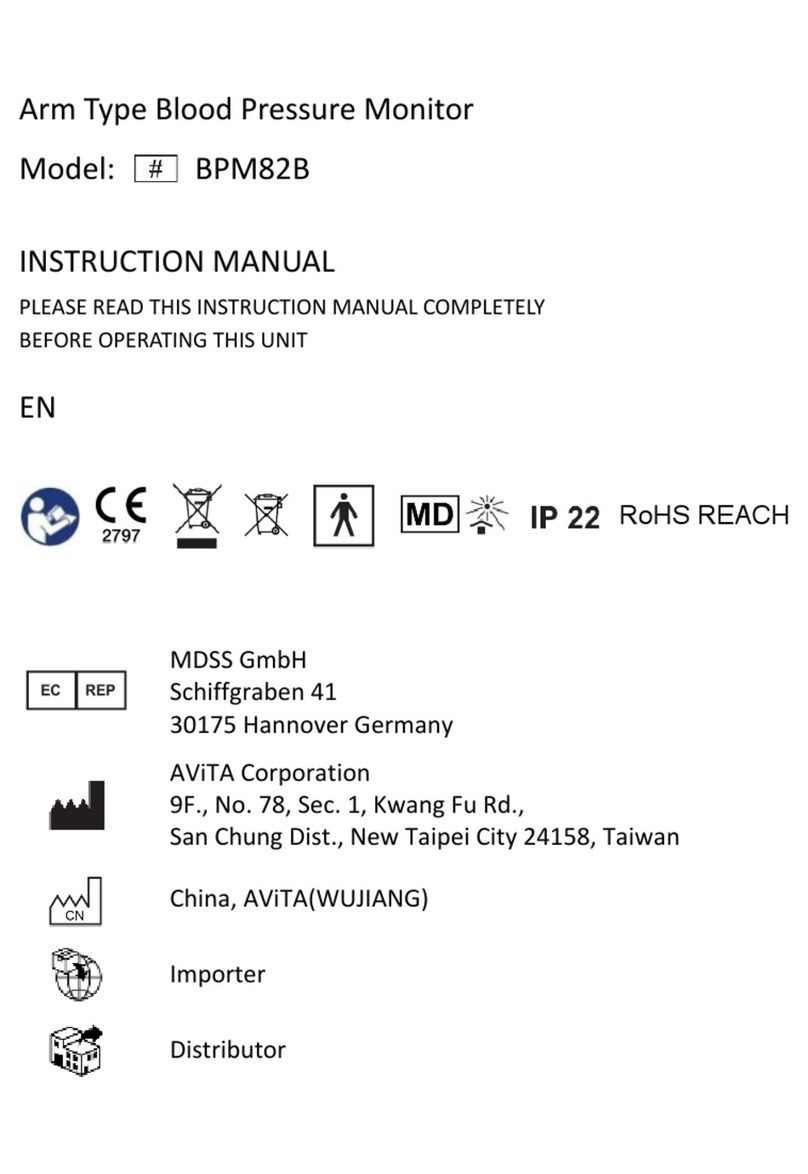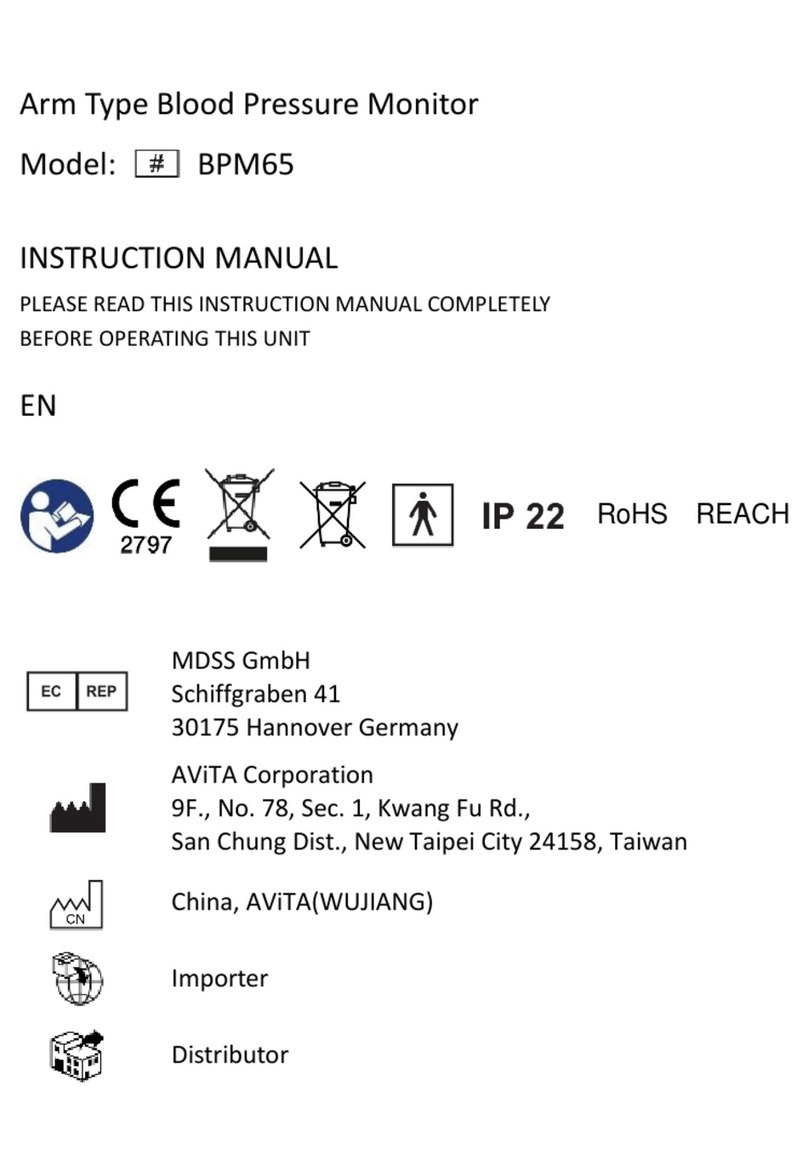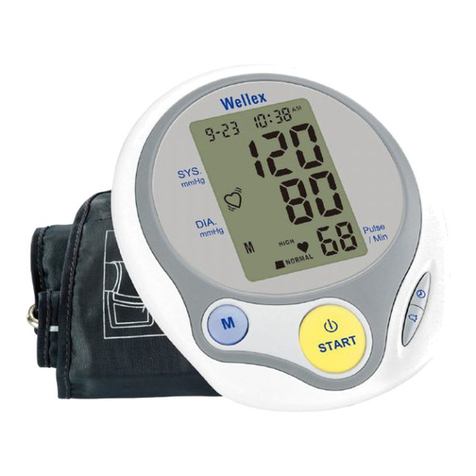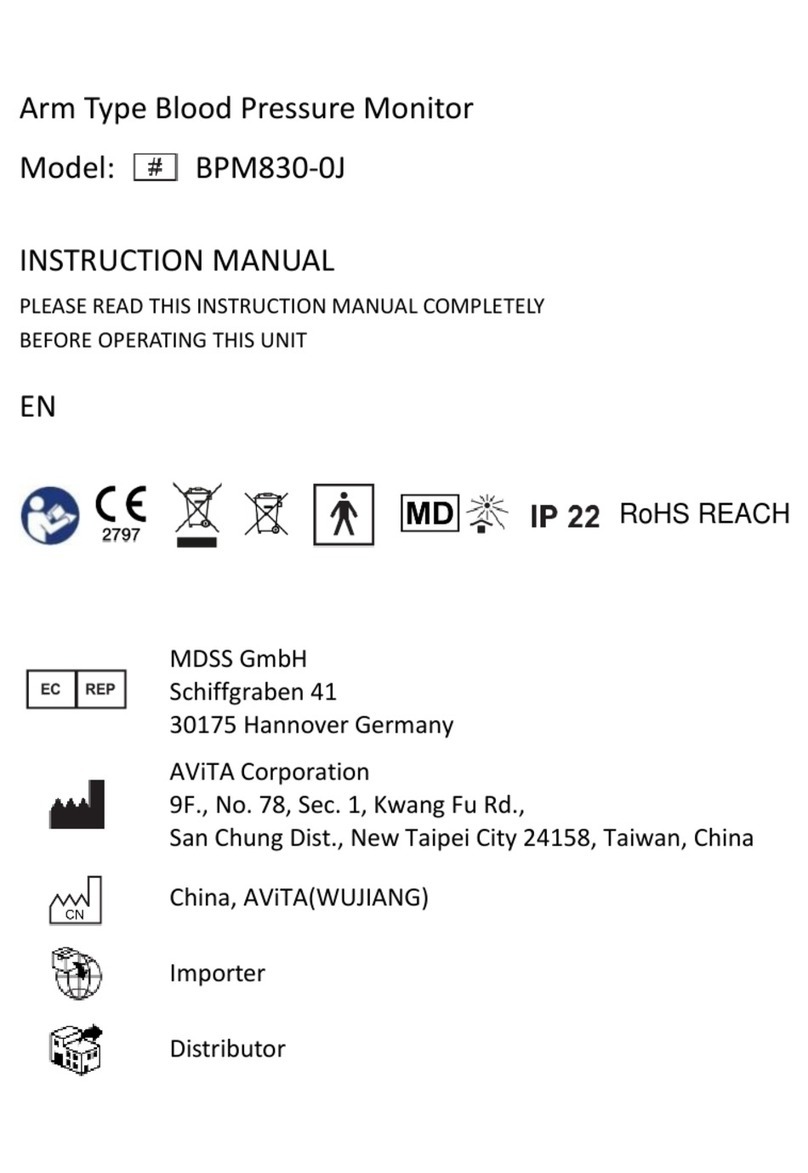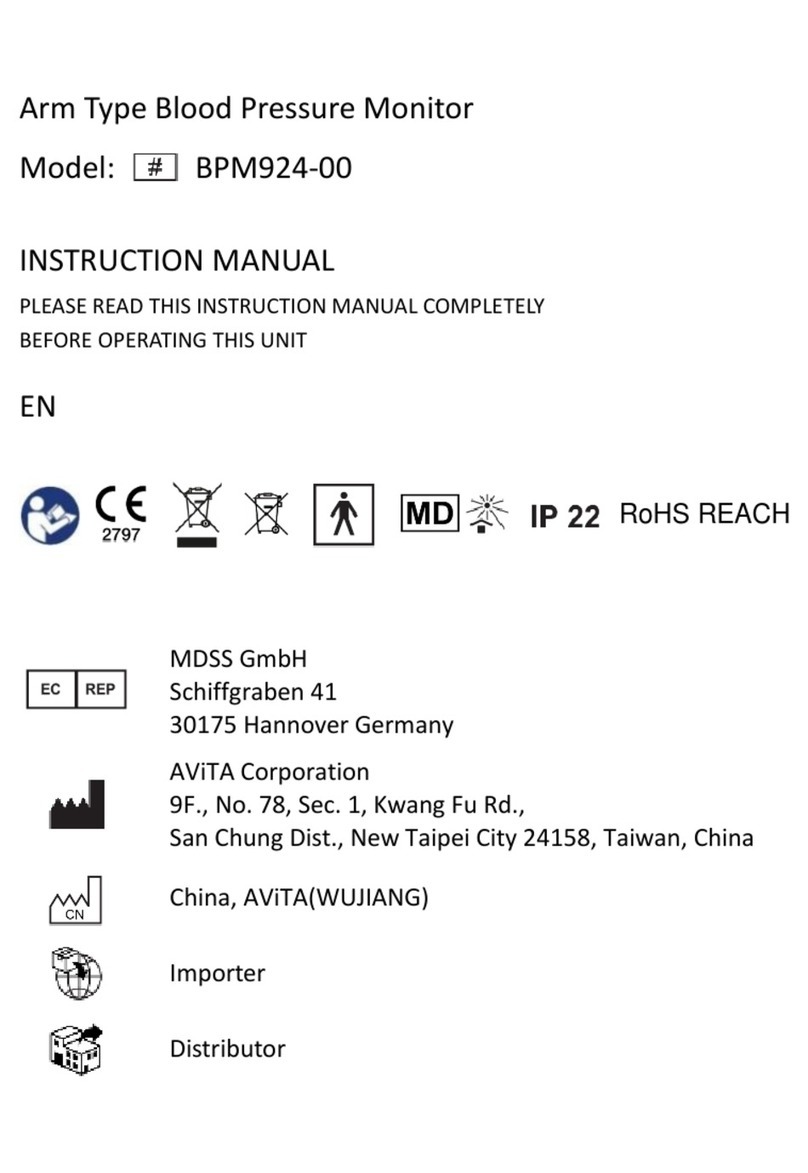
3
Important Information before Use
1. Blood pressure measurements should only be interpreted by a
physician or a trained health care professional who is familiar with
your medical history. Through regular use of this device and
recording of your measurements, you can keep your physician
informed of the changes in your blood pressure.
2. Perform your measurement in a quiet place. You should be seated in
a relaxed position.
3. Avoid smoking, eating, taking medication, alcohol consumption or
physical activity 30 minutes prior to taking a reading. If you are
exhibiting signs of stress, avoid taking your measurement until the
feeling subsides.
4. Rest 15 minutes prior to taking a reading.
5. Remove any constrictive clothing or jewelry that may interfere with
the cuff placement.
6. Keep the monitor stable during measurement to achieve an
accurate reading. Remain still; do not talk during the measurement.
7. Record your daily blood pressure and pulse readings on a chart.
8. Take your readings at the same time, each day or as recommended
by your physician to get an accurate indication of change in your
true blood pressure.
9. Wait a minimum of 15 minutes between readings to allow for the
blood vessels to return to normal. The wait time may vary
depending on your individual physiological characteristics.
10. Although such cases are rare, for those with an extremely weak
pulse or irregular pulse, errors may result which prevent proper
measurement. If abnormal variations are noticed, consult with your
physician or trained healthcare professional.
11. This device is intended for adult use. While taking a measurement,
you can stop the inflation or deflation process of the cuff at any
time by pressing the POWER button.


